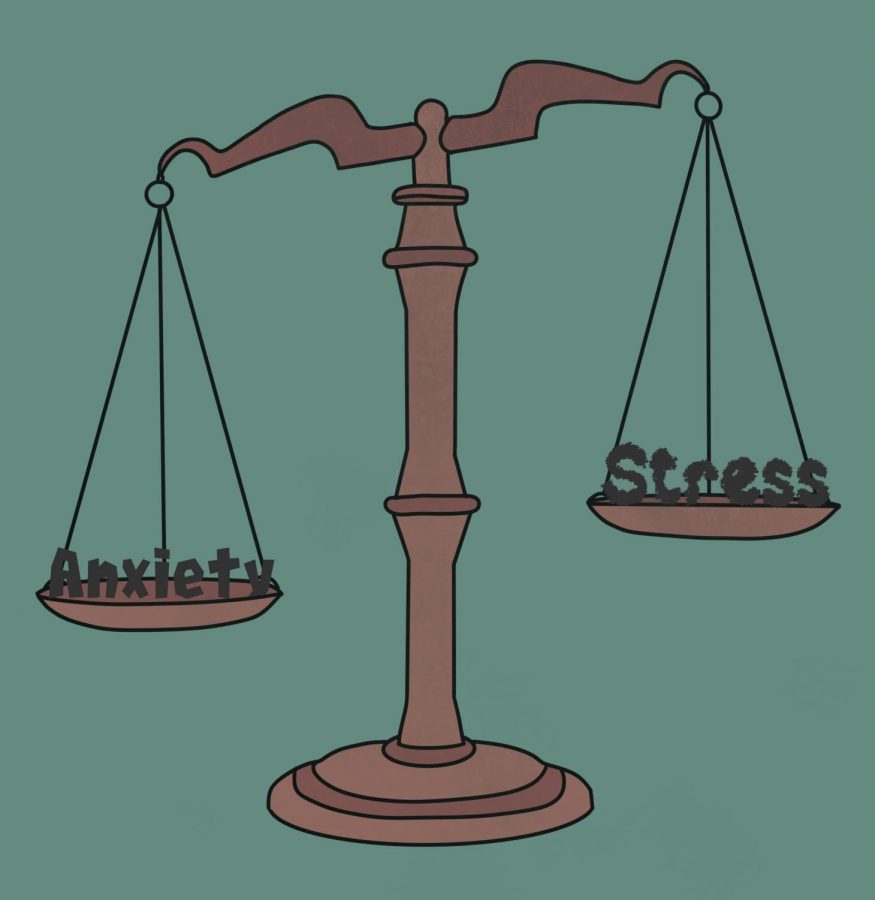Stress Test: Stress Is Far Less Severe But Often Mislabled As Anxiety
January 3, 2022
Highland teacher Sara Lea loves teaching math to her students but knows that it can stress them out. When they feel this way, it is a chance for her to teach something that goes beyond equations.
Stress is a normal part of school and a normal part of life. Everyone feels it. The butterflies that are felt before a test, a big game, or even meeting someone new are all examples of common stresses.
However, stress is something different than anxiety. This is where Lea seeks to teach students the difference between the two.
Lea has observed that students have been blending the two definition of stress and anxiety, some even using them as synonyms; many teens have started self-diagnosing themselves with having anxiety.
This is dangerous, Lea argues.
“Definitions have crossed, and people have started calling that [Regards of stress] anxiety,” Lea said.
Anxiety is a medical condition that is diagnosed by a medical professional. Those who have anxiety have to go through extra means to help with their anxiety because it’s not something that goes away easily.
This is what Lea is trying to focus on with her students. She works hard to talk with her students about stress being a normal thing, hoping to debunk the idea that some students have anxiety because of stress to help students realize the defined line between the two.
“I’m trying to help students unpack things and they start to realize that what they are saying is anxiety is really just stress,” Lea said.
Anxiety has become a serious issue for teenagers. Almost one in three teenagers will experience some sort of anxiety disorder, according to the National Institutes of Health.
Anxiety can cause people to feel restless, easily fatigued, and experience difficulty concentrating, according to the National Institute of Mental Health. These emotions typically don’t go away without medical attention.
Stress, however, can also lead to these same symptoms but not nearly to the extent that anxiety does. And once the issue that is causing the stress is resolved — like finishing a huge assignment or getting out of a bad relationship — the symptoms typically subside.
With anxiety, symptoms will remain even after the triggering event is long gone.
Stress is not anxiety but, if not dealt with properly, it can lead to anxiety.
“When stress becomes anxiety, it’s a perception in your mind. If you feel like I’m in control of this situation… it doesn’t become anxiety,” Highland psychology teacher Ted Sierer said. “The issue is, in your mind, you feel like you have lost control.”
Steps can be taken to help control and stop stress from becoming something greater: talking with someone, taking time to think and recognize what is causing the stress, and focusing on actions that can stop that stres before it gets out of hand.
“Both stress and mild anxiety respond well to teaching and practicing coping mechanisms,” Salt Lake School District nurse Judi Yaworsky said. “It is about just taking care of yourself.”
For Lea, teaching students to handle stress appropriately is just part of the job of a teacher. Students should feel stress in school and then learn how to address it properly, Lea believes.
Lea strives to teach being considerate of others and thinks that calling stress anxiety diminishes what true sufferers of anxiety are feeling.
Students need to know the difference, “…out of kindness to people who are suffering in the United States,” Lea said. “Let’s be compassionate for them.”





























